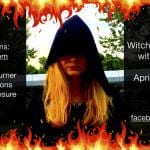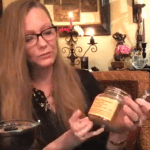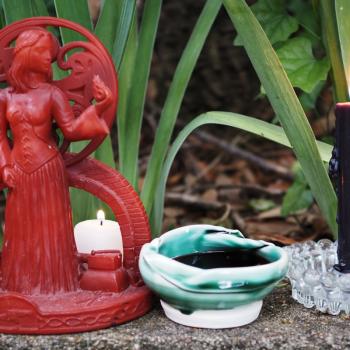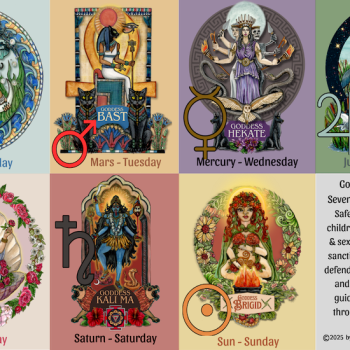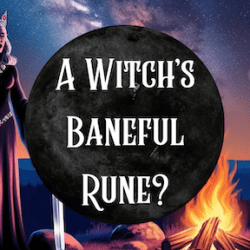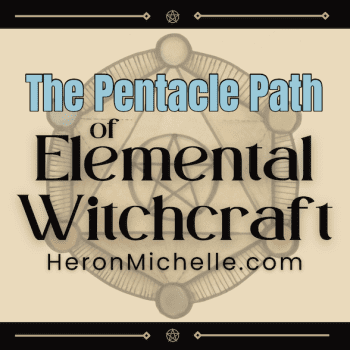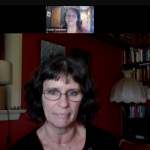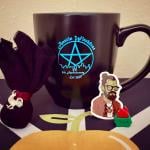Often in Wiccan circles you’ll hear witches quoting “Hermetic axioms” like as above, so below. What is less-often discussed is what Hermetic Philosophy is all about, or how it came to have so much influence within our beliefs and practices. Hermetics provides the bones and substance of a magickal pagan paradigm. So, how did this ancient philosophy find its way to Europe into what we call Wicca, or Modern witchcraft?
In this Foundations of Modern Witchcraft articles, I’ve shared what I learned on my quest to discover the answers the question Who is Hermes Trismegistus? We explored the Hermetic Cosmology of the Pymander, and the teachings of Hermetic Philosophy. Then, we took a side-road that diverged in 1908 America, with the “Seven Hermetic Principles” in The Kybalion. In this article, we’ll conclude with a timeline of how these philosophies made their way into Wicca and Modern Witchcraft, with a resource list for further reading.
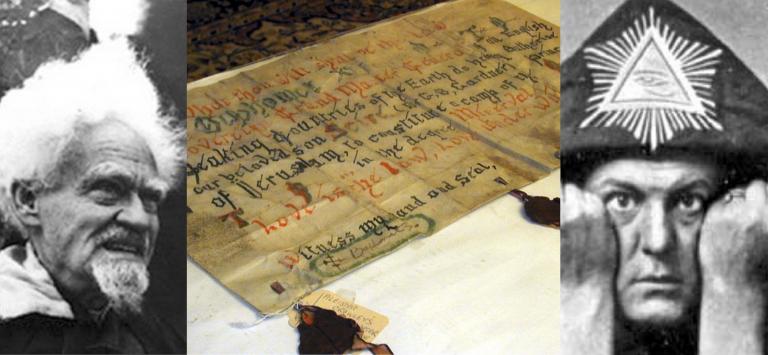
Hermeticism Comes to Europe: Western Esoteric Philosophy
We’ve already covered the rise of Hermetic philosophy in the late classical period in Alexandria Egypt (1-3rd Century CE), and how they hid out within Persian culture after the burning of the Library of Alexandria, and subsequent fall of the Christian Dark Ages. But how did these pagan ideas re-emerge and come to influence Western Europe during the Renaissance? That is an interesting story!
Historical Milestones:
1460: Cosimo de’Medici a hires a Christian Monk named Leonardo of Pistoia to search European monasteries for ancient texts, and he shows up with these 14 codices in Greek.
They assumed at the time that Hermes Trismegistus was a contemporary of Moses. Moses, the legendary figure to part the Red Sea in the Old Testament book of Exodus, was said to be a Hebrew man who was raised as a Prince in Egypt before eventually freeing his people from enslavement. These Hermetic Texts were thought to be the God Thoth’s Mysteries, guarded and passed on through his Priesthood in the Egyptian Temples. It was also assumed that the Egyptian Temple Mysteries of Thoth were taught to Moses, Plato and Pythagoras, rather than the other way around. (They were wrong.)
Cosimo de’Medici hires the scholar Marsilio Ficino to translate the 14 codices into Latin.
The availability of the complete Corpus Hermeticum in Latin took off like wildfire across Renaissance Europe, spawning many more works in the fields of astrology, alchemy, medicine, and magick. This is also what kicked off the Alchemical search for ways to “turn lead into gold” and make the “Philosopher’s Stone” for immortality.
1614: Isaac Casaubon, a Swiss Calvinist, proves that the Corpus had nothing to do with Moses, and originated in the first-third Centuries AD among the “pagans” of Alexandria. This killed much of the enthusiasm for these philosophies in the public, Christian-dominant over-culture.
On those foundations were built the traditions of mystery schools such as Rosicrucian, Theosophy, and Freemasonry, among others. Those occult traditions in turn influenced the teachings of the Hermetic Order of the Golden Dawn. The Golden Dawn initiated the infamous British occultist, Aleister Crowley, in 1905.
Crowley built upon those Hermetic teachings, and later founded his own magickal tradition known as Thelema. Crowley led the Ordo Templi Orientis (Order of the Temple of the East) at the turn of the 20th Century. He was a prolific writer, and accomplished magus who spent significant time and study back in Egypt. Crowley returned much of the magickal imagery and practices away from the mistaken connections made to Judaism and Christianity during the Renaissance. O.T.O. and Thelema brought occult magickal practices back to their roots in ancient pagan sciences from Greece and Egypt. Crowley and Lady Frieda Harris codified these Hermetic occult mysteries in their Thoth Tarot Deck, which mirror the Qabala Tree of Life.
1908: William Walker Atkinson published The Kybalion: A Hermetic Philosophy under the pen name “Three Initiates” This work syncretized Hermeticism with the New Thought philosophies, Transcendentalism, Psychology and new discoveries in subatomic physics. The Kybalion was highly influential within many spiritual paths. From Science of Mind by Ernest Holmes, to The Secret by Rhonda Byrne, to Doreen Virtue’s Divine Magic: The Seven Sacred Secrets of Manifestation. More on that here.
1945: Near Nag Hammadi, in Egypt, is found a treasure trove of Coptic Gnostic texts, with a much better preserved version of parts of Hermetic Asclepius. Five Hermetica were found in a Sahidic dialect, two had never been seen before [Ebeling p.11]. These stoked the fires of interest once more, and shed much additional light into our understanding of The Hermetic texts in historical context.
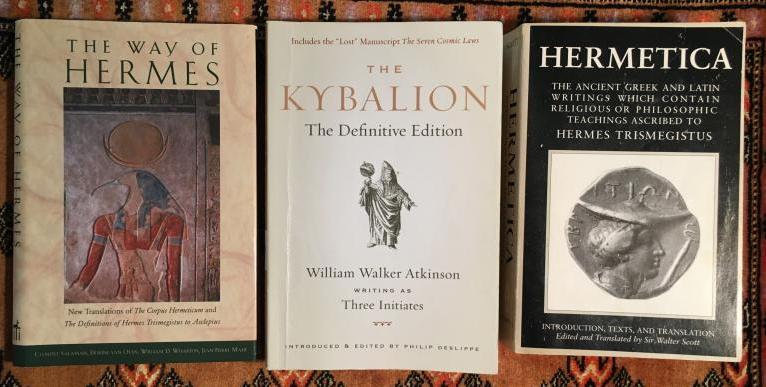
How did Hermetic Philosophy influence modern Wicca and Witchcraft?
The most obvious answer is that any decent Occultist in Europe after the Renaissance were inevitably involved in Western Esoteric Philosophies, of one form or another, and those inevitably included Hermetic ideas. All the founders of Wicca and Witchcraft tended to be well-studied occultists.
In the late 1940’s, Aleister Crowley granted an Englishman named Gerald Gardner a charter for the O.T.O. Gardner is also known to have been a member of the Freemasons, and was associated with the Rosicrucian Theater – all were built upon Hermetic Philosophy. He syncretized what he’d gathered from his various influences, studies in anthropology and folk magick, and his personal initiations in British Witchcraft. Gardner wrote books and spoke publicly about his unique blending of Witchcraft and Western Esoterism, which came into general awareness in the 1950’s and 60’s. That later came to be known by many as Gardnerian Wicca.
Throughout the ensuing 70 years, “Wicca,” complete with ritual forms based in Hermetic Philosophy, inspired hundred’s of traditions throughout the world, by many names, and with many diverse styles and expressions. If any form of Witchcraft includes the notions of the four elemental energies of earth, water, fire and air, called from cardinal directions in an energetic circle… If there is attention to cycles of the sun, moon, and the astrology of the classical planets… if those planetary correspondences are sought within allies of plants, bone, and stone… If Tarot symbolism, the Qabala tree of life, or a three world model of mind, body, and spirit are found… If any importance is placed on visualizing a desired magickal outcome, forming a succinct intention and speaking those words of creation with power… If the interconnection of nature’s cycles are celebrated as being entirely sacred, both light and darkness, God and Goddess… Then that Craft carries with it the fingerprints of Hermeticism. The popularity and easy access to modern books on Wicca, Witchcraft, New Age and Occultism, spread awareness of Hermetic philosophies far and wide, even if they were not adequately credited as such.
In 1990, the “official witch of Salem,” Laurie Cabot, included the Hermetic principles of The Kybalion in her book Power of the Witch. Subsequently, her student, Christopher Penczak, taught this Hermetic-influenced Witchcraft through his Temple of Witchcraft series of books in the 2000’s. Which is how it came to this witchy researcher’s attention. I’ve continued to teach these metaphysical principles as the Science of Magick in The Sojourner Tradition’s mystery school, as well.
The Moral of the Story
This wee timeline, and the contents of this article series, barely scratch the surface of the many influences of Hermeticism upon Neo-paganism, Magickal practices in the West, and Modern Witchcraft. I believe that it persists because it rings true and proves useful to many kinds of spiritual people, who then teach it to their own students, and so on.
I find beauty and peace in the Hermetic notion that nature is divine, and that everything in existence is multi-form with body, spirit, and a spark of consciousness. I am inspired by the flexibility and expansive inclusivity of the Hermetic ideas on gender, and wholeness. I am comforted by the notion that my own thoughts may partner within divinity to create my life, directed through my own will. I appreciate the Hermetic focus on the eternal quest for self-improvement. I like the emphasis on questioning which continues to evolve Hermetic Witchcraft through practice, rather than be strangled by dogma.
In short, the principles derived from the Hermetic Philosophy are consistently beneficial to many, regardless of religious framework, and so they persist. I think they persist in accordance with a Higher Divine Will, which continues to evolve and reveal itself through The Great Work of magick. This is a worthwhile endeavor, and so I am proud to call my personal practice a form of Hermetic Witchcraft. Hail Hermes!
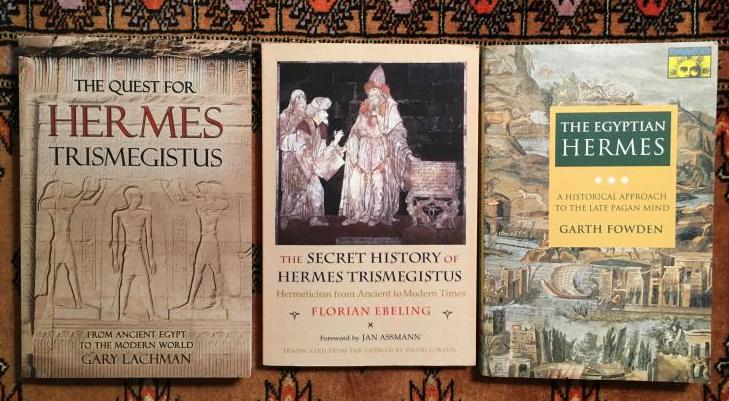
Suggested Reading, and Resource list for this series:
- The Kybalion 100th Anniversary Ed. William Walker Atkinson, writing as Three Initiates. Introduced and Edited by Philip Deslippe. New York. Penguin Group.
- Real Alchemy: A Primer of Practical Alchemy. Bartlett, Robert Allen. Lake Worth, FL. Ibis Press. 2009
- The Secret History of Hermes Trismegistus: Hermeticism from Ancient to Modern Times. Ebeling, Florian. Ithaca and London, Cornell University Press, 2007.
- Hermetica: The ancient Greek and Latin Writings Which Contain Religious or Philosophic Teachings ascribed to Hermes Trismegistus, Edited with English Translation and Notes. Scott, Sir Walter. Boston: Shambala Press, 1993.
- The Way of Hermes: New Translations of the Corpus Hermeticum and The Definition of Hermes Trismegistus to Asclepius. Clement Salaman, Dorine Van Oyen, Willian D. Wharton, Jean-Pierre Mahe. Rochester Vt. Inner Traditions. 2000.
- The Egyptian Hermes: A Historical Approach to the Late Pagan Mind. Garth Fowden. Princeton, NJ Princeton University Press. 1986.
- The Quest for Hermes Trismegistus: From Ancient Egypt to the Modern World. Gary Lachman. Great Britain. Floris Books. 2011.
- The Secret Teachings of all Ages: An Encyclopedic Outline of Masonic, Hermetic, Qabbalistic and Rosicrucian Symbolical Philosophy. Golden Anniversary Ed. Hall, Manly P. Los Angeles, The Philosophical Research Society, Inc. 1928, 1978
Thanks for Reading,
~Heron Michelle



